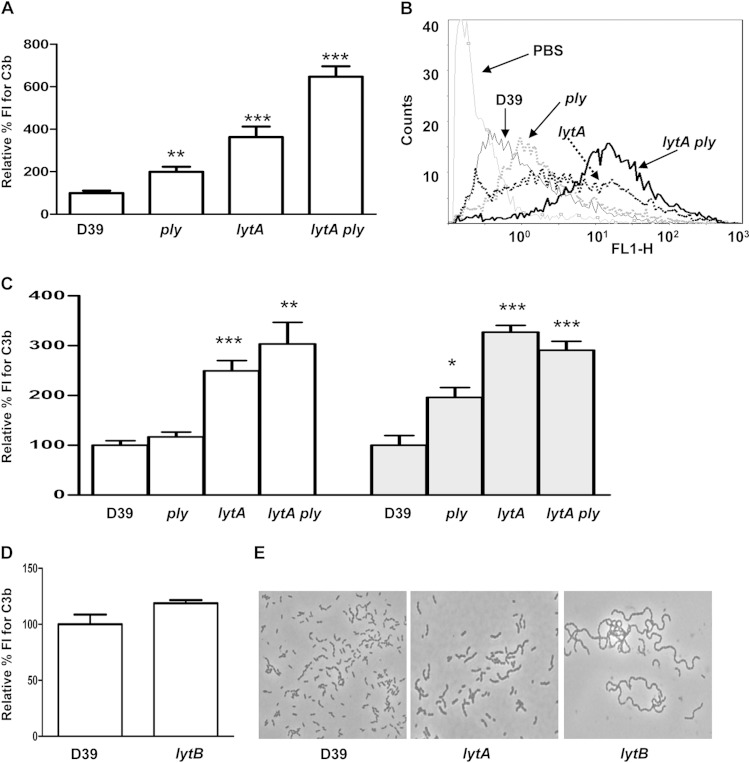FIG 1.
LytA of S. pneumoniae avoids complement activation by a Ply-independent mechanism. (A) C3b deposition on the surface of the wild-type and isogenic defective strains using NHS, as measured by a flow cytometry assay. (B) Example of a flow cytometry histogram for C3b deposition using NHS. (C) Deposition of C3b via AP (white bars) or CP (gray bars) activity in human serum in which C1q (white bars) or factor B (gray bars) was depleted, respectively. (D) Binding to C3b on the surface of the wild-type D39 strain and the lytB strain. (E) Phase-contrast microscopy images of pneumococcal wild-type D39 and isogenic lytA and lytB strains. Error bars represent SDs, and asterisks indicate statistically significant differences compared to the results for the wild-type strain: *, P < 0.05; **, P < 0.01; ***, P < 0.001. P was <0.01 for the comparison of the C3b results for the lytA ply double mutant versus the single mutants using NHS. For the results for all defective strains compared to those for the wild type, P was <0.001 (one-way ANOVA with Dunnett's post hoc test). FI, fluorescence intensity.

